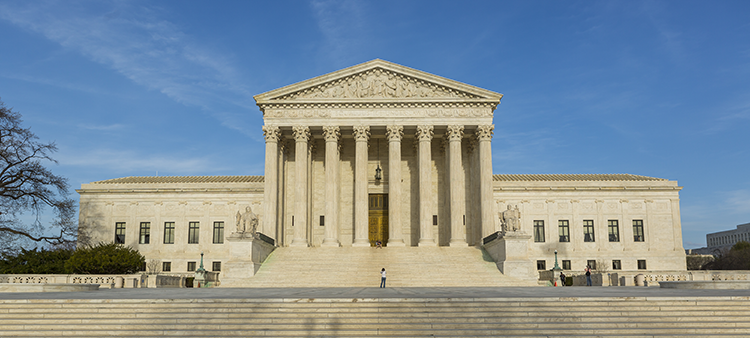Redacting confidential client information: The devil is in the details

Shutterstock
Special Counsel Robert Mueller’s report on Russian interference in the 2016 election is filled with pages and pages of black boxes that cover up text. The four categories of redactions made by U.S. Attorney General William Barr include grand jury material, sensitive material, matters that could affect ongoing investigations and infringements on the privacy rights of peripheral third parties.
Blackouts in the Mueller report are a high-profile example of what lawyers do on a regular basis to protect client information in public documents: redact.
But sometimes lawyers or legal staff fail to properly redact information, and such failures can lead to the release of embarrassing information, civil liability or disciplinary action. Earlier this year, lawyers for President Donald Trump’s former campaign chair, Paul Manafort, failed to properly redact a PDF document filed in response to an information request by Mueller.
Failing to redact documents correctly can have significant consequences. Without the investment of time and extra layers of eyes, mistakes can occur, whether technology is used or not.
“The improper use of technology to redact a document is one example that may receive less attention on tech best-practices lists,” says Jan L. Jacobowitz, director of the Professional Responsibility & Ethics Program at the University of Miami School of Law. “Yet, this seemingly mundane task becomes monumental if a lawyer produces a document on which confidential or privileged information appears to be redacted but is actually highlighted.”
Mistakes like these can lead to the waiver of the attorney-client privilege, a malpractice lawsuit or even professional discipline in egregious cases. “It has never been as important as it has been today to redact information properly because the impact and consequences are much greater,” says Dave Deppe, president of UnitedLex, a legal services outsourcing firm.
Legal Requirements
The law often requires attorneys to ensure that client information is redacted. For example, the Federal Rules of Civil Procedure require attorneys to redact certain personally identifiable information in court filings. Rule 5.2(a), titled “Redacted Filings,” provides that filings can only include the last four digits of a Social Security or tax ID number, the year of an individual’s birth, a minor’s initials or the last four digits of a financial account number.
The legal challenges increase if lawyers have to comply with the privacy requirements of other countries.
When lawyers fail to properly redact information, they conceivably violate a number of provisions in the ABA Model Rules of Professional Conduct. If a lawyer fails to make reasonable efforts to redact privileged or other protected confidential client information, at a minimum the lawyer violates Rule 1.6 on Confidentiality of Information, explains ethics expert Leslie C. Levin, a professor at the University of Connecticut School of Law: “It’s also a violation of the duty of competence under Rule 1.1. Under Rule 1.1, competent handling of a matter includes giving the required attention to a matter.”
The general confidentiality provision is Rule 1.6(a), which provides that a “lawyer shall not reveal information relating to the representation of a client unless the client gives informed consent, the disclosure is impliedly authorized in order to carry out the representation or the disclosure is permitted” by a separate provision.
Rule 1.1 states that a lawyer “shall provide competent representation to a client. Competent representation requires the legal knowledge, skill, thoroughness and preparation reasonably necessary for the representation.” A specific comment to Rule 1.1—Comment 8 or the technology clause—also comes into play. It provides: “To maintain the requisite knowledge and skill, a lawyer should keep abreast of changes in the law and its practice, including the benefits and risks associated with relevant technology.” This can include understanding the variety of technology tools available to redact client information.
Another rule comes into play for lawyers who have supervisory authority over other lawyers or legal assistants. A lawyer “having direct supervisory authority over the nonlawyer shall make reasonable efforts to ensure that the person’s conduct is compatible with the professional obligations of the lawyer,” according to Rule 5.3(b).
“A lawyer’s misstep may also implicate the rules relating to supervision of nonlawyers if the lawyer tasked a legal assistant with the redaction of documents,” Jacobowitz says.
Challenges Lawyers Face
Redacting all the necessary information is more difficult than it sounds. It requires significant attention to detail and, ideally, layers of review. Mistakes can occur because of the volume of material lawyers handle on a regular basis.
“Even when lawyers work hard to redact all privileged and other protected confidential information, it can be hard to eliminate all errors. This is especially true when lawyers are producing massive numbers of documents,” Levin says.
Wrong ways to redact information include changing the font to white, blacking out with comment tools, deleting certain passages or covering text with a black marker. Perhaps an essential first step for most lawyers is to consult Adobe Acrobat Pro software’s instructions on how to properly redact material from PDF files. Adobe Acrobat’s X’s White Paper lists a seven-step process for redaction that includes the following stages: “Scope, Document Preparation, Mark Items, Review, Apply, Remove MetaData and Save.” (See also: “How to redact a PDF and protect your clients.”)
“Lawyers need to think creatively about all conceivable search terms to identify privileged and other confidential material,” Levin cautions. “They need well-trained lawyers to review the documents to make the determinations about whether the material should be redacted.”
UnitedLex’s redaction technology includes an auto-redact function that will obscure items such as Social Security numbers, dates of birth and home addresses.
But while technology can streamline the process, human participation in the process is key. “Once potentially confidential information is identified, there is no substitute for human review of the documents,” Levin says. “Lawyers need to make the final judgments.”



